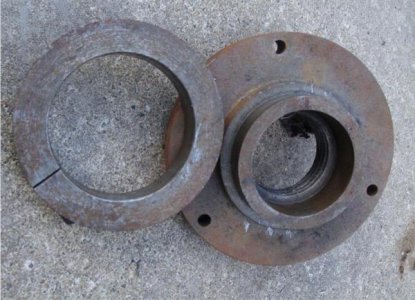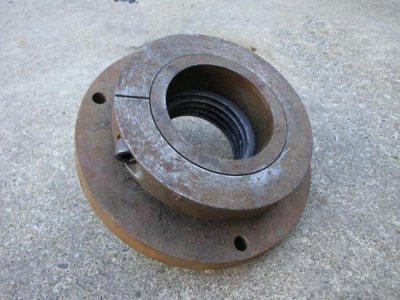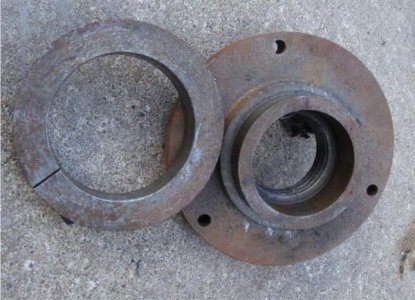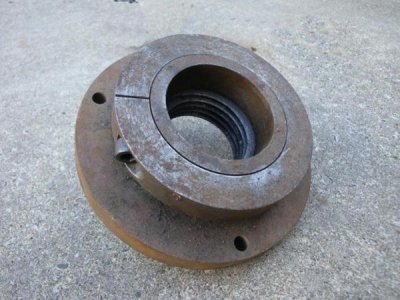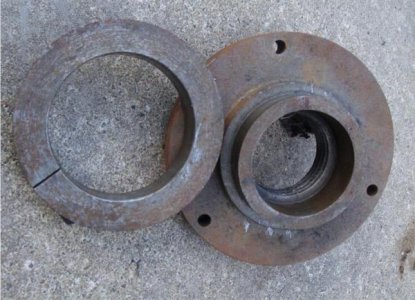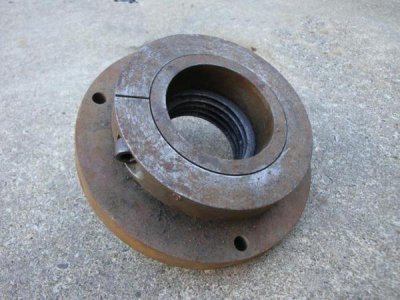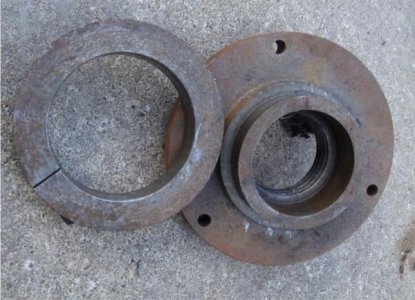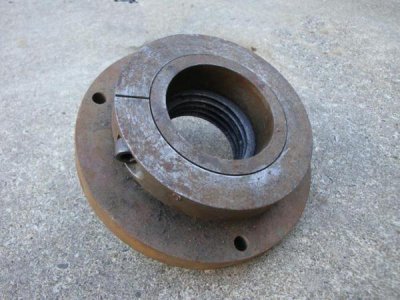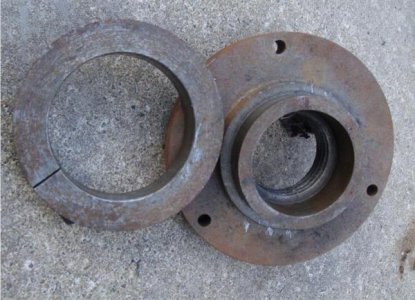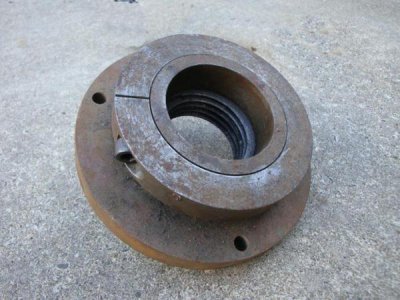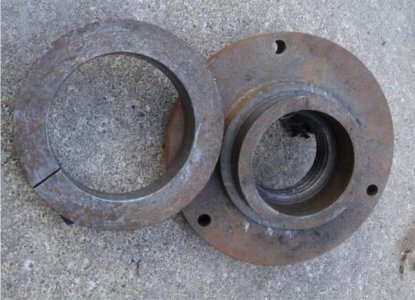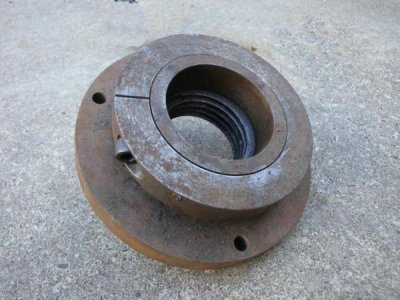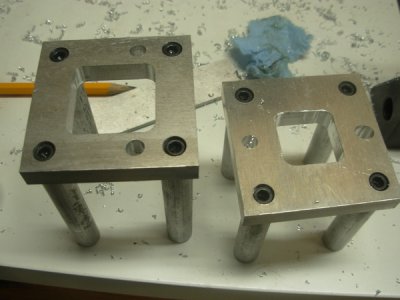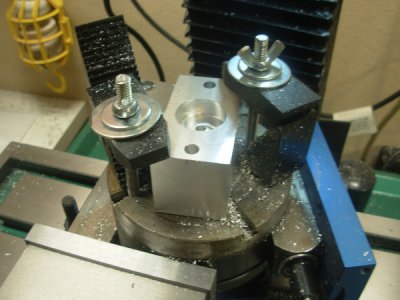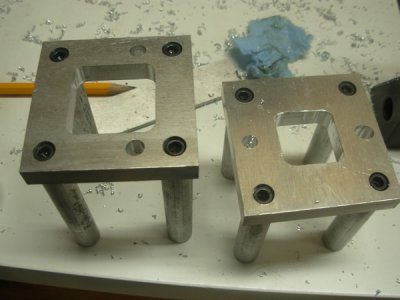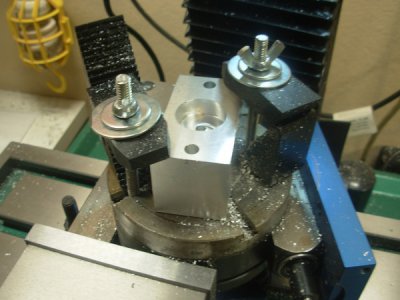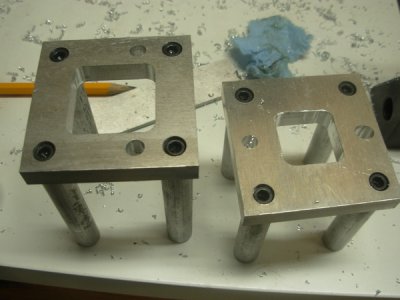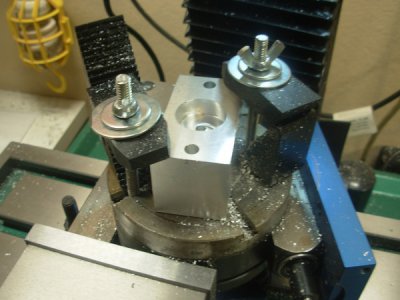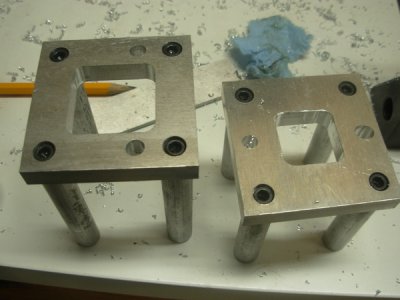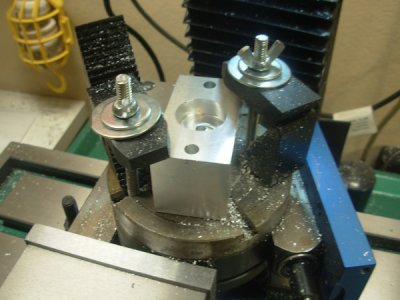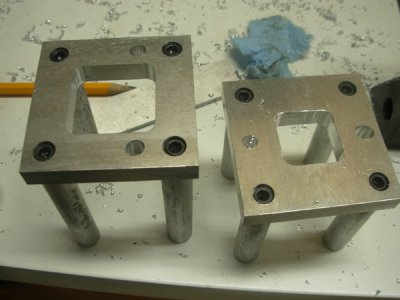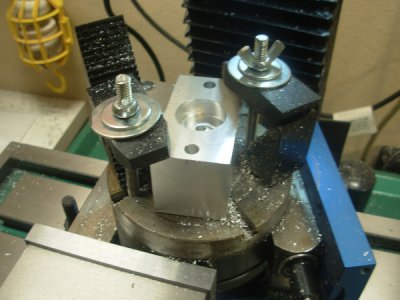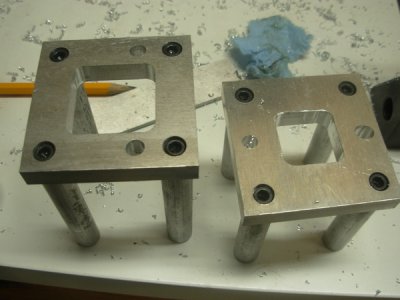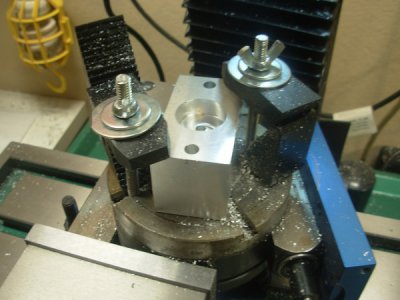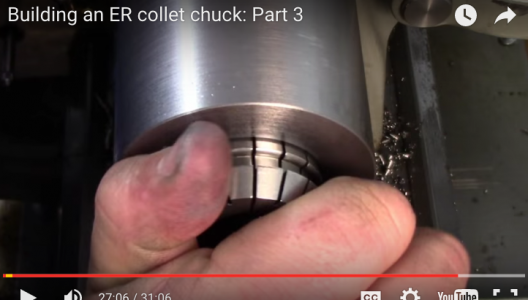I powered the head on my PM25 mill today. Not for machining purposes, but for saving the rotator cuff on my right shoulder.
I've been working toward this for a couple of weeks, I started with a junk yard windshield wiper motor from a Ford Windstar,
The project began with mounting a ball bearing on the shaft for the head crank. I was able to replace the crank after the bearing was in place. I was amazed at how much easier the head moved up and down.
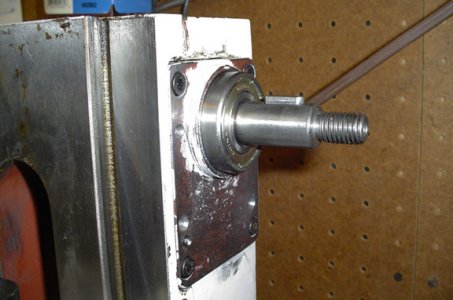
I learned quite a bit about the construction of this portion of the machine in this process. The lead screw, inside the column has a thrust bearing on top, easing considerable friction there. I mounted a piece of 3/8 by 4 aluminum on this carrier, adding support to the bearing and supporting the motor.
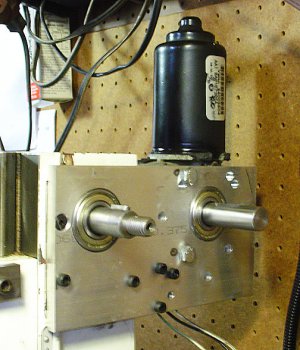
The cluster of cap screws in the center bottom supports a block bearing against the body to support the weight of the motor. There are four screws mounting the plate to the column and three cap screws mounting the motor to the plate. There appear 6 extra mounting holes where I tried to locate the motor in earlier attempts. Not errors, just developments.
From the back the motor looks like this.
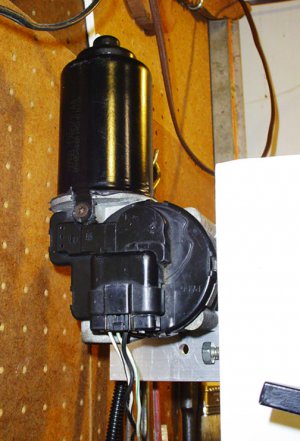
Here's the head and the control. I take little pride in my sheet metal work. The red off/on switch is a dummy, the green push button is normally off, the two toggles are (on the left) high and low speed, and on the right, up and down. I elected not to put in a variable speed control.
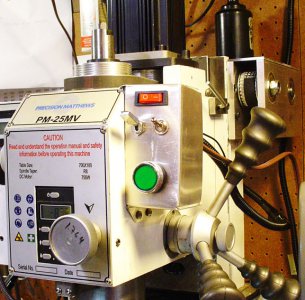
And the drive unit all bolted together and ready for service.
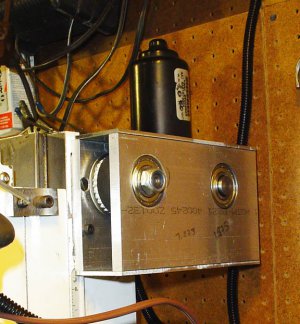
I'm looking forward to a lot of use, saving my shoulder. It's a bit slower than I can crank, but a lot easier.


